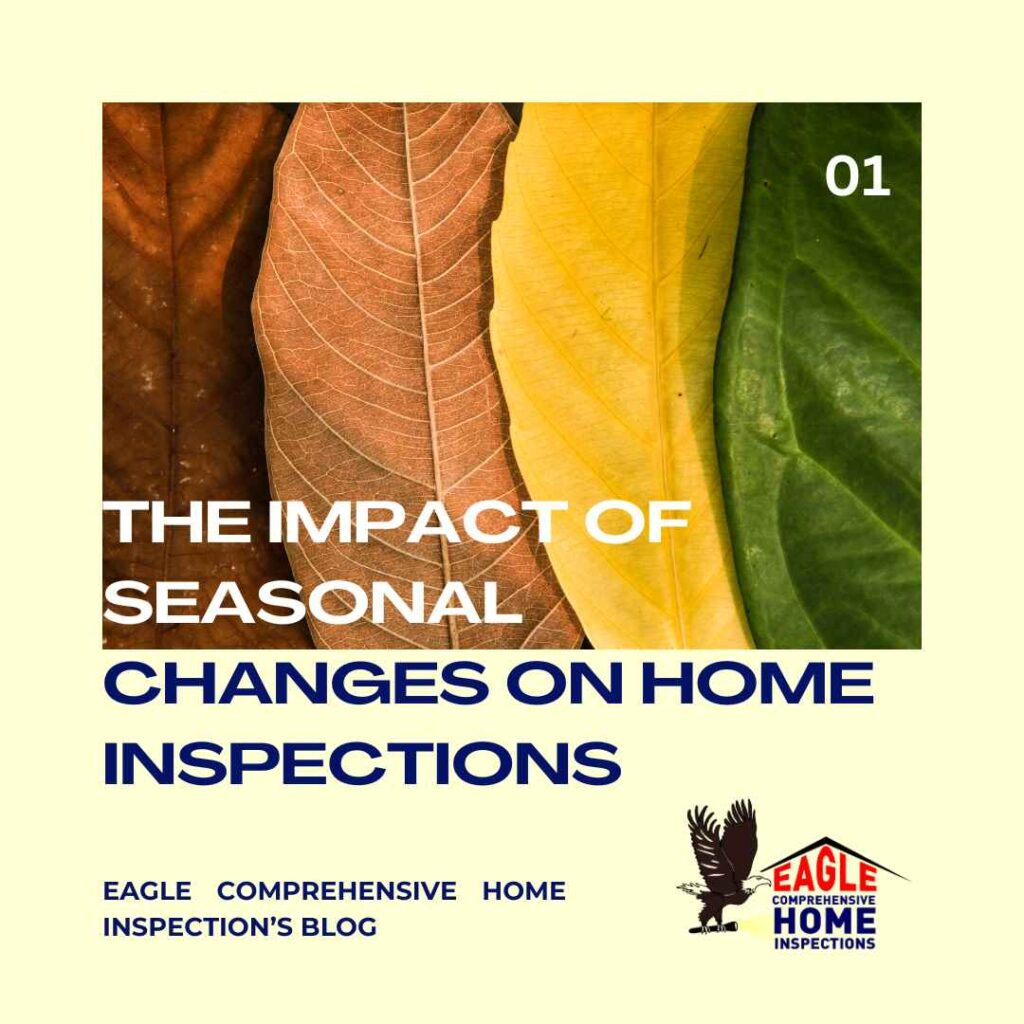Seasonal changes have a substantial impact on the condition of a home, influencing everything from its structural integrity to its mechanical systems. To ensure your home remains in good shape year-round and to catch potential issues before they become major problems, it’s essential to schedule home inspections that align with the distinct challenges posed by each season.
Spring: Renewal and Potential Water Damage
Spring heralds renewal and growth, but it also brings its fair share of challenges for homeowners. As the snow melts and spring rains arrive, moisture can seep into a home’s foundations, leading to cracks and leaks. Additionally, this season sees an uptick in pest activity, with termites and carpenter ants becoming more active. A thorough home inspection during the spring can help identify these issues before they escalate into major, costly problems.
Summer: Heat and Humidity
Summer ushers in sweltering heat and humidity, which can strain a home’s HVAC (Heating, Ventilation, and Air Conditioning) system. The extreme temperatures can cause wood in the home to expand and contract, potentially resulting in cracks and leaks. A summer home inspection is crucial for detecting HVAC system issues and evaluating the structural integrity of the property.
Fall: Changing Leaves and Storms
Fall brings changing leaves and cooler temperatures, but it can also deliver strong winds and storms that may damage roofs and siding. Leaves and debris can accumulate in gutters and downspouts during this season, posing a risk of water damage. A fall home inspection is essential to identify potential problems with the roof, siding, gutters, and drainage systems. Seasonal roof inspections are also essential.
Winter: Snow and Cold
Winter’s arrival brings snow and icy conditions, which can place a significant strain on a home’s heating system. The plummeting temperatures can also cause pipes to freeze and potentially burst, leading to water damage. A winter home inspection focuses on assessing the functionality of the heating system and plumbing to ensure they can withstand the harsh conditions.
Ensure a well maintained property for Seasonal Changes
Schedule regular inspections of the property to identify issues early on. This includes checking for leaks, structural damage, and signs of wear and tear. If the property has a garden or lawn, ensure regular mowing, pruning, and watering. A well-maintained exterior enhances the property’s curb appeal.
Tips for Scheduling Seasonal Home Inspections
To maximize the benefits of seasonal home inspections, consider the following tips:
Choose a Qualified Inspector: Select a home inspector with expertise in your local climate and familiarity with regional building practices. This ensures they understand the specific challenges posed by each season.
Get Multiple Estimates: Obtain estimates from several inspectors to compare pricing and services. This allows you to make an informed decision based on your needs and budget.
Assess Qualifications: Inquire about the inspector’s experience, qualifications, and insurance coverage. A well-qualified and insured inspector provides added confidence in their capabilities.
Participate in the Inspection: Be present during the inspection to ask questions and address any concerns you may have. This proactive approach allows you to gain a deeper understanding of your home’s condition.
Request a Written Report: After the inspection, request a detailed, written report from the inspector. This report should include findings, recommendations, and any areas of concern. It serves as a valuable reference and helps prioritize necessary repairs or maintenance.
Key Takeaway
By adhering to these guidelines and scheduling home inspections tailored to each season’s unique challenges, you can proactively maintain your home’s condition, safeguard your investment, and ensure a safe and comfortable living environment for you and your family. If you have any questions or need further assistance, please don’t hesitate to contact us.

